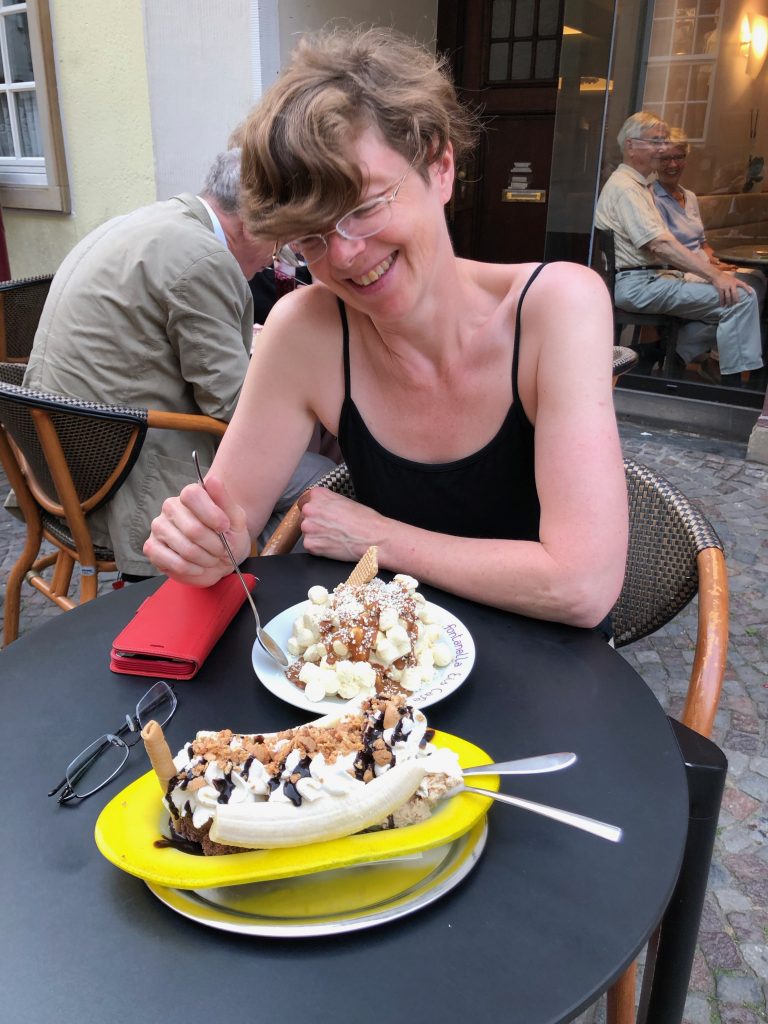
A lovely relaxed day without any tourist program—and NO PHOTOS except one glorious shot of our gelato concoctions. What a great change of pace after the jam-packed 2 weeks we had! We got up around 7 am (we are quite a bit further north now, so sunset has shifted from shortly before 9 pm to shortly before 10 pm, and the correspondingly early sunrise at around 5 am makes for broad daylight at 7!), had a leisurely breakfast, and then did computer things and laundry and went for a little errand to get cash and some minor toiletries we were running low on. At 11 am, we went for a longer walk with Imke, which also included settling some legal things with a notary, and then a simple little lunch at a cafe downtown, where Imke and Mark had the little German mini meatloaves called Frikadelle, and I had a baked potato with a generous portion of various fresh salads and marinated vegetables. It was getting quite warm so we all walked home with the goal of taking a nap. After some rest, we had coffee and a cookie each while we were also looking through a box of things from my stepfather (who died in 2012) from his days as a tour guide on exotic bus tours that Imke wanted us to go through with her rather than on her own. Afterwards, she and I sat in the garden for a while and chatted some more, while Mark puttered on his computer, and at just before 6 pm, we ducked out to the neighborhood bakery and greengrocers‘ for some fresh-baked rolls and a cucumber before they closed up shop for the day. My mom fixed a salad to go with the rolls and cold cuts, and we have a lovely German dinner that way.
Afterwards, Mark and I went for a long-ish walk, hitting a number of familiar spots, and circling around to our favorite local gelateria, where we‘d had take-away cones a couple of times, but where we finally wanted to sit down and have a fancy ice dream cup. I had „gnocchi“ (vanilla and hazelnut gelato in the shape of gnocchi dumplings with this fabulous hazelnut syrup), and Mark had a wonderful banana split. We were back home at about 9 pm, and then wrapped up our packing and a bit of housekeeping and went to bed around 11 pm.